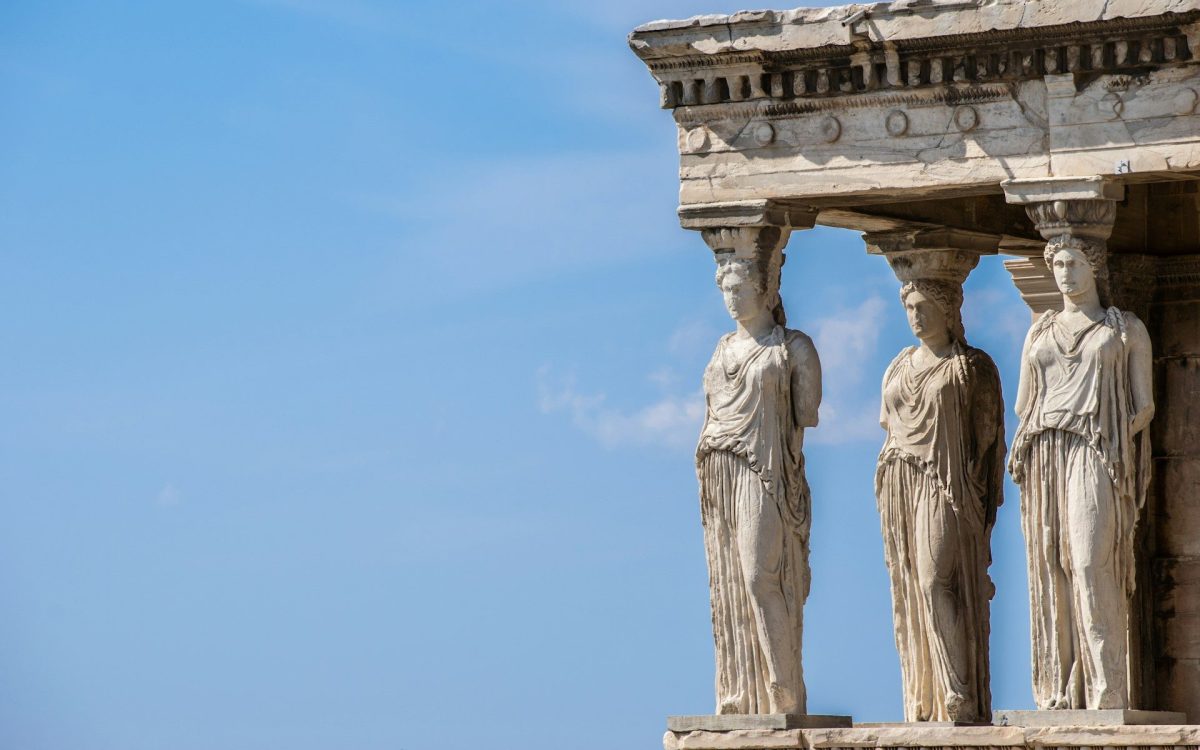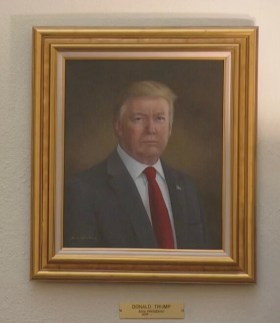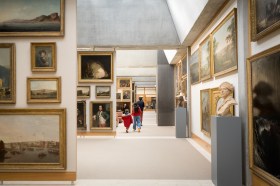‘The Parthenon Marbles represent two-and-a-half-thousand years of glorious Greek history. They are an indispensable part of our national identity and heritage,’ says Emanuel Comino, Founder of the Australian Campaign for the Repatriation of the Parthenon Marbles.
His tone is filled with an intense passion, one that he hopes will move people to take action and fight for the repatriation of the famous Parthenon Marbles from the British Museum in London, to their home in Athens.
Many are familiar with the grandeur of Athen’s finest historic monument, the Parthenon. With its rising columns and ancient friezes, this structure has established itself as a cultural icon. It is also underpinned, however, by a story of great injustice.
Why are the Parthenon Marbles important?
The Parthenon was constructed under the leadership of the great Greek statesman, Pericles, as a symbol of Athens’ thriving democracy between 447 and 432 BCE. The temple is decorated with 92 carved metopes depicting the Trojan War and other mythological battles. A frieze depicting a procession to the Acropolis decorates the entire length of the Parthenon’s inner chamber. There are also two sculptured pediments that depict the birth of Athena – goddess of wisdom and war, as well as the patron goddess of Athens – and the conflict between Athena and Poseidon over Athens.
However, the Parthenon has had its fair share of damaging encounters. Following the occupation of Greece by the Ottomans in the 15th century, the Parthenon was repurposed as a mosque, and then half the structure was destroyed in a battle between the Venetians and the Ottomans.
During Napoleon’s campaign in Egypt in 1799, the former British ambassador to the Ottoman Empire, Thomas Bruce, the seventh Earl of Elgin, was instructed to survey and create casts of the country’s greatest monuments. He thus appealed to the sultan for a “firman” (special permission) for his project.
The firman reads: ‘When they wish to take away some pieces of stone with old inscriptions and figures, no opposition be made.’
Elgin took this to mean that he could physically dismantle any pieces of art from the temple that he wished to – an interpretation of the firman that is now widely challenged. He and his team then proceeded to remove 15 metopes, half of the surviving frieze and four fragments from a smaller temple dedicated to Athena Nike, located on the Acropolis. The collection was loaded into boxes and transported to England by ship.
In the past few decades, Greece’s campaign to return the Marbles from the British Museum to Athens has faced more hurdles that it perhaps anticipated. In the 1980s, the Greek Government issued a formal request to the British Museum to repatriate the Marbles, arguing that the authorisation for their removal was granted by an occupying empire, not the government itself.
Further to this, international critics have accused the Museum of housing its Greek and Assyrian collections in questionable conditions. Damage was inflicted on the collection during World War II when the galleries were hit during the bombing of London in 1940. In 1999, a group of Greek conservationists inspected the Marbles, to find that the morphology of the sculptures has suffered as a result of efforts to make them “whiter”.
In 2021, The Art Newspaper published photographs of the poor condition of the roof of the Greek galleries. Greece’s Minister of Culture, Lina Mendoni argued that the ‘abandonment shown in the pictures from the British Museum reinforces Greece’s rightful demand for the sculptures’ permanent return to Athens and their reunification with the Parthenon’. The new Acropolis Museum in Athens was built in 2009 with the intention of showcasing pieces from the Parthenon, with a view of the monument itself. It is still waiting to welcome the Marbles home…
In 2021, a UNESCO advisory board, tasked with the responsibility of facilitating bilateral negotiations between countries on the matter of returning cultural property to countries of origin, voted unanimously to include an additional text on the return of the Parthenon Marbles to its agenda since Greece first made the request in 1984.
2023 was described as ‘a momentous year for the campaign‘, with talk of long-term loans, artefact exchange and partnerships underway between the British Museum Chair, George Osborne and Mendoni.
Ongoing Australian efforts
The question of whether cultural diplomacy or legal action is the more efficient way of pressuring the British Government to return the Marbles has been a lingering question. Unbeknown to many is the fact that both faces of the campaign have been spearheaded by some very prominent Australians.
Comino is the Founder and Chairman of the International Organising Committee – Australia – For the Restitution of the Parthenon Marbles (IOC–A–RPM) and is also the Vice-Chairman of the International Association for the Reunification of the Parthenon Sculptures. As a young man, he promised Melina Mercouri – the well-known actress and Greek Minister of Culture in the 1980s and 90s, who led a global crusade for the reunification of the Parthenon Marbles – that he would never cease the fight. The 90-year-old known as the “Father of the Marbles Campaign” is not about to break his promise.
ArtsHub speaks with Comino about his current vision for the effort and what he imagines for the future of the campaign to bring the Parthenon Marbles home.
Growing up in Greece, during the backdrop of WWII, Comino feels an immense sense of cultural pride. His commitment to return all the antiquities around the world to Greece began in the 1980s. What began as talks and lectures started to build into a movement.
In 1981, Comino established the very first committee for the Repatriation for the Parthenon Marbles in the world. The Australian Committee carries great significance and is supported, not only by its historic origin, but also by the large Hellenic diaspora, which has offered much patronage over the years.
Read: Architecture commission reimagines The Parthenon, but is it appropriation?
IOC–A–RPM primarily organises community awareness initiatives in addressing Parliament, speaking to media, producing educational resources and facilitating community events.
While the work of the Committee specialises in raising cultural awareness around the reunification of the Parthenon Marbles, however, another Australian has worked closely on the legal campaign.
David Hill is the current Chairman of the Australian Parthenon Association, former Chair and Managing Director of the ABC and, since the early 2000s, the Executive Director of the British Committee for the Restitution of the Parthenon Marbles. Hill has been advising the Chairman of the Board of the British Museum, various arts and culture ministers in the UK, as well as those within the Greek Government.
Over the last decade, Hill has called for international legal action, working with prominent international lawyers such as Amal Clooney and the Australian British barrister and academic, Geoffrey Robertson QC. Robertson recently published his book, Who Owns History?, which dives into the legal case for returning the Parthenon Marbles.
While Hill acknowledges the importance of the cultural diplomacy strategy employed by those such as Mercouri and Comino, he believes something stronger, such as litigation, needs to be undertaken by the Greek Government to drive substantive change, urging it to take the UK Government to court.
Yet, both Comino and Hill believe that the overall campaign is growing stronger, with notable British newspapers such as The Times and The Telegraph, declaring support for the return of the Marbles.
Quoting the Greek Prime Minister, Kyriakos Mitsotakis, Comino says that to house half the Parthenon Marbles in London and half in Athens, is ‘like cutting the Mona Lisa in half’. He concludes by urging the Australian community to continue their support of the organisation, as it is only through the fierce power of community, that a movement can be built.
Hill similarly acknowledges the importance of the Greek diaspora in building public awareness, and to apply legal pressure, so that the Parthenon Marbles may return to their rightful home in our generation.
This article is published under the Amplify Collective, an initiative supported by The Walkley Foundation and made possible through funding from the Meta Australian News Fund.




_Encounters-in-Reflection_Gallery3BPhoto-by-Anpis-Wang-e1745414770771.jpg?w=280)
